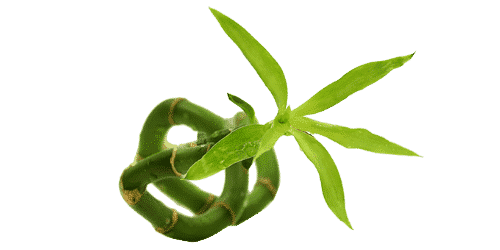
Origin
Originating in the tropical regions of India or China, its presence in Europe can be traced back to the Silk Road era. Also known as “Asian reed” or “Chinese cane”, it is not really considered to be a tree, but rather a giant reed. There are around 1300 species of bamboo in the world. In South East Asia, it is venerated as it is considered as a sacred plant that symbolises reincarnation. Today bamboo is still, both in China and Japan, mentioned in various legends and has a lot of symbolic meaning.
Did you know?
In 1878, during a fishing party, Thomas Edison noticed that the threads of his bamboo fishing rod began to glow when it fell into the camp-fire, without however burning. This then gave him the idea to place a bamboo filament inside a bulb and to heat it using an electric current, this is how the electric bulb was invented.
Characteristics
Bambusa arundinacea is a spiny bamboo with particularly sharp spines. It is composed of long light green leaves and very solid stems that can be folded easily without breaking them. Its growth is extremely quick, up to 25 cm per day. Certain species can therefore reach up to thirty metres in height. In general it can be used in the manufacture of objects such as furniture or even musical instruments but also in food, the construction of houses, or simply as a decorative plant.
Flowering and harvesting
It is a perennial plant that prefers rich and moist soils, which is why it is thrives close to water bodies. However, it also needs a lot of sunshine to flourish. Spiny bamboo is very resistant, it can withstand both droughts and frost. It can produce flowers all year round, quite randomly. This depends above all on the climate. The flowers are yellow and are arranged in clusters. In phytotherapy, the young plants are used and the fluid from the nodes which naturally contain silica.
Benefits
The plant is rich in silica, but that's not all. It also contains polysaccharides, proteines, fibres, lipids, and essential amino acids.
Bamboo:
- Promotes joint comfort
Spiny bamboo provides a great feeling of comfort in the joint area. It contributes in effect to the reconstruction of the cartilage and bone tissue by promoting the synthesis of collagen.
- Helps to maintain good bone health
It promotes the binding of calcium to the bone. It can also prevent bone fragility and help to maintain good nail, teeth and hair health.
https://jardin-secrets.com/bambou-epineux.html
https://www.mr-plantes.com/2010/07/bambou-bambusa-arundinacea/
https://phytotherapie.ooreka.fr/astuce/voir/640791/bienfaits-du-bambou
http://www.wikiphyto.org/wiki/Bambou
